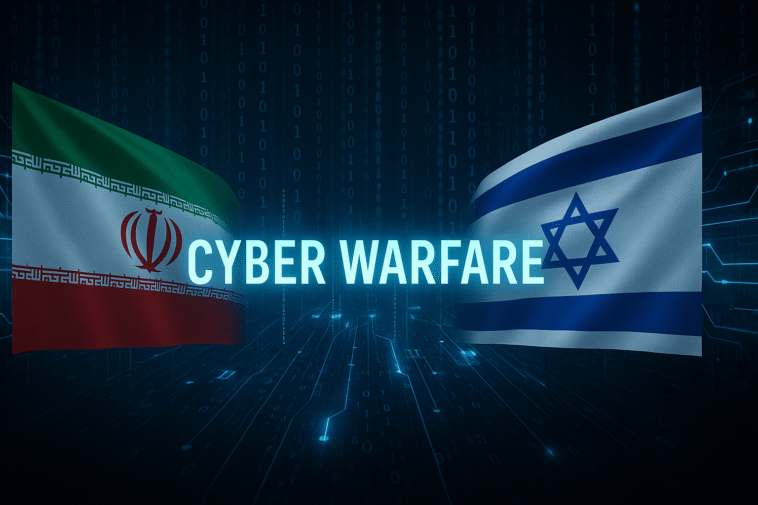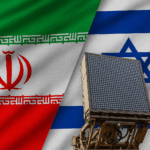 Cyber Warfare Iran Israel 2025: Digital Shadows in a Real War
Cyber Warfare Iran Israel 2025: Digital Shadows in a Real War
In the unprecedented June 2025 escalation, the Iran Israel cyber warfare 2025 front emerged as a hidden but critical battlefield. While airstrikes and drone swarms made headlines, a parallel digital war was unfolding—one shaping command systems, citizen networks, and global policies. This is cyber warfare at its most intense and covert form.
 1. June 2025: Internet Control & Power Plays
1. June 2025: Internet Control & Power Plays
Following Israel’s Operation Rising Lion airstrikes on June 13—targeting Natanz, Tehran, and top IRGC figures—Iran responded with missile and drone assaults. Concurrently, they shut down nearly 50 % of internet access at home to control the narrative. Amid air-raid sirens in Tel Aviv and Haifa, a surge of cyber operations detected across the region underscored how cyber warfare Iran Israel 2025 spans borders.
 2. Iran’s Offensive Cyber Tactics
2. Iran’s Offensive Cyber Tactics
Tehran’s digital offensive has taken multiple forms:
-
Disrupting civilian infrastructure: Power utilities and transportation systems were targeted, with hackers impacting hospital operations and kindergarten screens in Israel.
-
Mass phishing campaigns: Shin Bet reports that 85 assassination-linked phishing attempts targeted Israeli officials in 2025—often using fake Google Meet invitations.
-
Disinformation blitz: Bots and fake accounts pushed panic narratives and false casualty reports, a classic cyber warfare Iran Israel 2025 strategy.
These campaigns aimed to destabilize critical services and amplify anxiety—digital warfare in its most disruptive form.
 3. Israel’s Fortified Cyber Shield
3. Israel’s Fortified Cyber Shield
In response, the Israel National Cyber Directorate (INCD) and Shin Bet launched their own countermeasures:
-
Cyber Dome expansion: Upgraded AI-based systems now detect DDoS, malware, and ransomware threats in microseconds.
-
Public–private integration: Collaboration with hospitals, utilities, and telecom firms ensures real-time threat intelligence and rapid response.
The result is a more resilient Israeli digital infrastructure—combat-ready in a wartime cyber theater.
 4. Offensive Israeli Counterstrikes
4. Offensive Israeli Counterstrikes
Israel didn’t just defend—it struck back:
-
Covert infiltrations: Reports indicate Israeli penetration into Iranian satellite, energy, and financial networks, disabling systems and stealing data during the June strikes.
-
Collective hacktivism: Anonymous-style groups linked to Israeli interests have leaked emails from Iranian officials, exposing secret operations—even as Tehran claims to have seized Israeli nuclear documents.
These moves show that cyber warfaris a high-stakes exchange, blurring defense and offense.
 5. Zero‑Days & Espionage
5. Zero‑Days & Espionage
Both sides appear to be exploiting unknown software vulnerabilities:
-
Iran holds an archive of stolen operational data—possibly used to initiate sabotage operations without detection.
-
Israel uses zero‑day exploits to breach Iranian industrial and military systems during live attacks, earning battlefield intelligence while crippling logistics and C2 structures.
This indicates full-spectrum digital warfare—espionage, sabotage, and disruption.
 6. Disinformation & Public Sentiment
6. Disinformation & Public Sentiment
Digital influence has been central to the cyber front:
-
Iran stages “digital protests” with AI-driven posts, suggesting Iranian citizens are celebrating Israeli strikes, aimed at discord.
-
Israel counters with transparency and myth-busting, publishing real-time alerts and updates—underlined during blackout periods in Iran after internet shutdowns.
This exchange highlights the psychological aspect of cyber warfare Iran Israel 2025, where public trust becomes a target.
 7. Attribution & Escalation Risks
7. Attribution & Escalation Risks
Identifying attackers remains intentionally murky:
-
Many operations use proxy servers and false flags, making attribution difficult.
-
Each cyberattack risks unintended escalation—bombing a power grid could justify airstrikes, adding tension to conventional conflict.
This makes cyber warfare Iran Israel 2025 as dangerous as kinetic warfare.
 8. Regional & Global Implications
8. Regional & Global Implications
The world is watching:
-
NATO and EU cybersecurity agencies are evaluating these cyber strategies for future defense frameworks.
-
U.S. allies take note as Washington shifts air-defense assets while minimizing direct involvement—avoiding being pulled into the digital battlefield.
This conflict is becoming a key case study on how cyber warfare Iran Israel 2025 may evolve into a global norm.
 9. Future Evolution: AI as Cyber Toolkit
9. Future Evolution: AI as Cyber Toolkit
The intersection of AI with cyberwar is expanding:
-
Automated counter-breach systems and real-time vulnerability patching
-
AI-generated spear phishing with precise personality targeting
-
Deepfake disinformation set to appear in Iran-Israel broadcasts
The cyber warfare Iran Israel 2025 front is about to enter its most dangerous phase yet.
-
Cyber warfare Iran Israel 2025 is active, multi-vector, and high-stakes.
-
Iran attacks infrastructure and public trust; Israel builds resilience and counters offensively.
-
Zero‑day exploits, disinformation, and espionage make this an invisible but lethal battleground.
-
Attribution ambiguity raises the danger of cross-domain escalation.
-
Global defense communities are studying this conflict as a model for future cy
Share this:
- Click to share on Facebook (Opens in new window) Facebook
- Click to share on X (Opens in new window) X
- Click to share on LinkedIn (Opens in new window) LinkedIn
- Click to share on Reddit (Opens in new window) Reddit
- Click to share on Tumblr (Opens in new window) Tumblr
- Click to share on Pocket (Opens in new window) Pocket
- Click to share on WhatsApp (Opens in new window) WhatsApp

